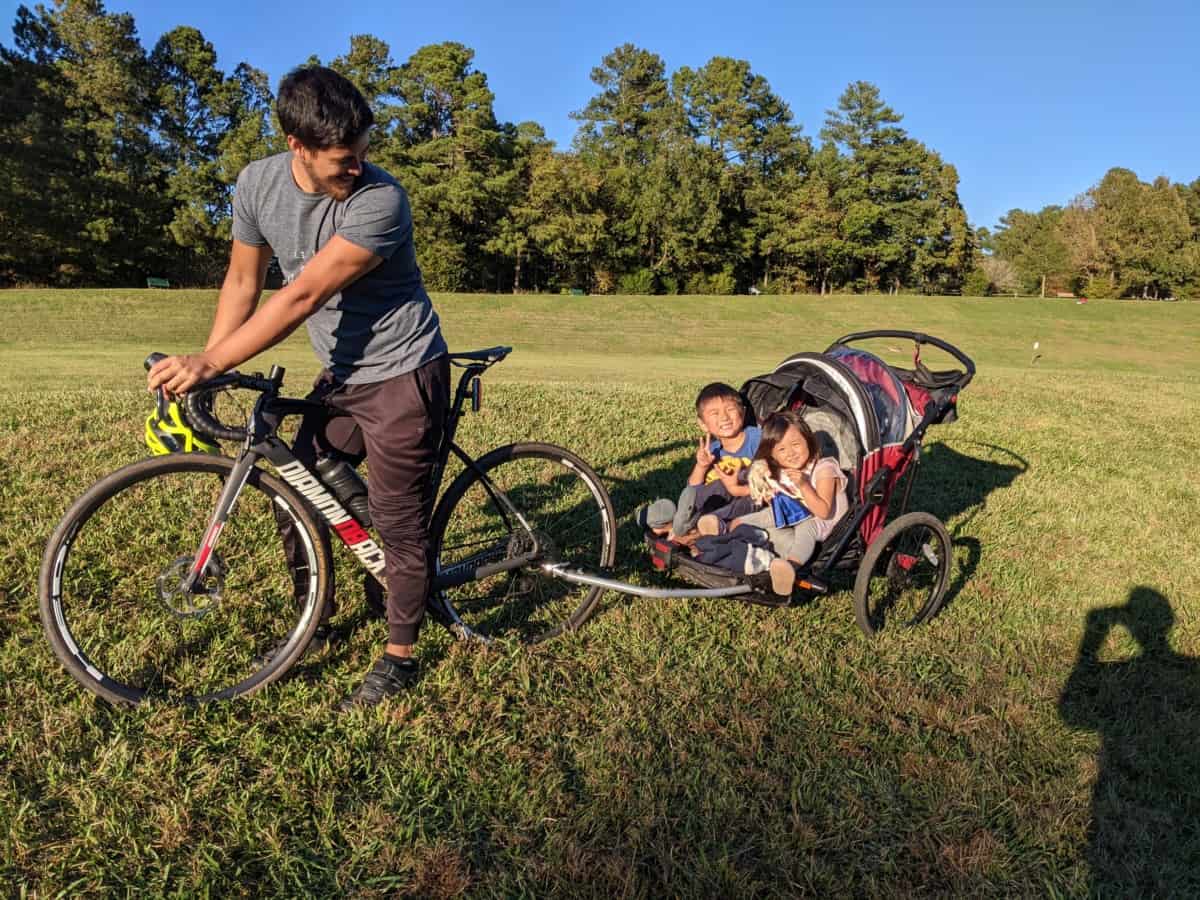Do you love cycling? Do you love your kids? Great! This article on bike trailer safety is for you.
Safety concerns are one of the first considerations that parents have when riding together with a child in a bike trailer. The evidence is clear that bike trailers are the safest way to ride together with a child, as opposed to bike-mount child seats.
But how safe are bike trailers exactly and what can you do to ensure that you don’t have any incidents?
I have been using bike trailers regularly with my two kids for the last 6+ years without ever coming close to having a crash or incident. In this article, I will outline why bike trailers are actually very safe and four tips for you to make it even safer.
Bike trailers offer a protective cage and harness seat belts that protect a child in the event of a crash. Bike trailers are the safest way to ride together with a child in comparison to alternative options, such as bike-mounted child seats.
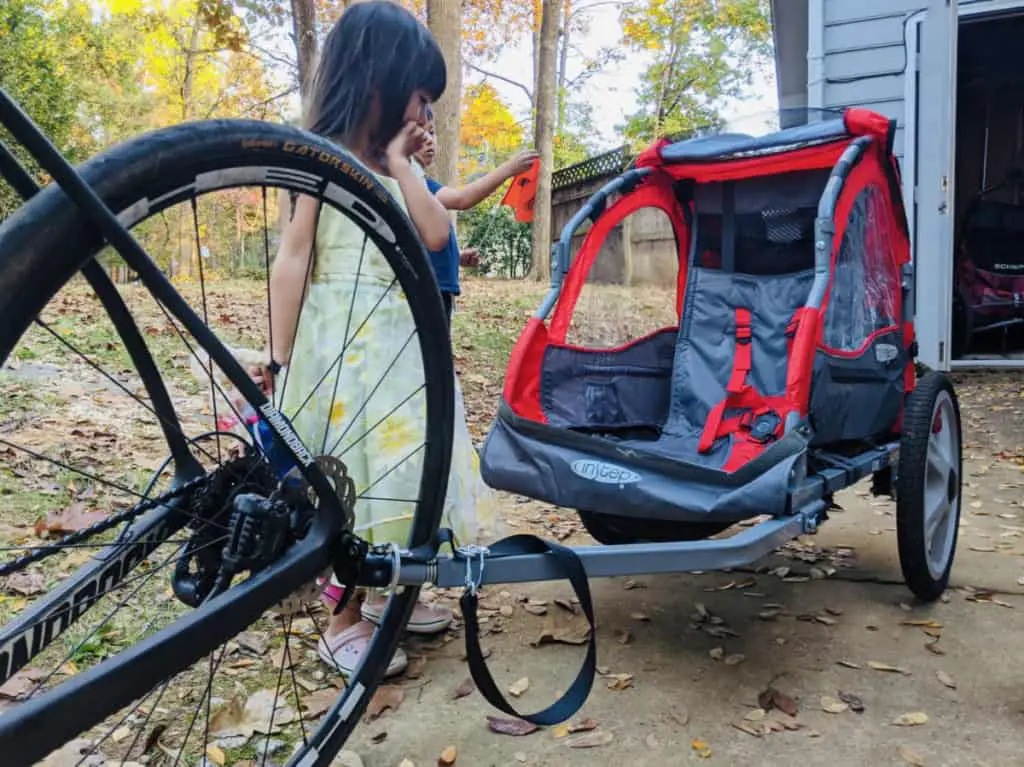
Bike trailers are actually very safe
With any outdoor activity that involves semi-high speeds, there is an element of risk, but the health benefits and enjoyment factors more often outweigh the risks.
For example, an adult riding a bike next to a child or skiing with a child has the same risk factors as pulling a bike trailer. This is exactly the reason why bike trailers are arguably the safest way to ride with a child.
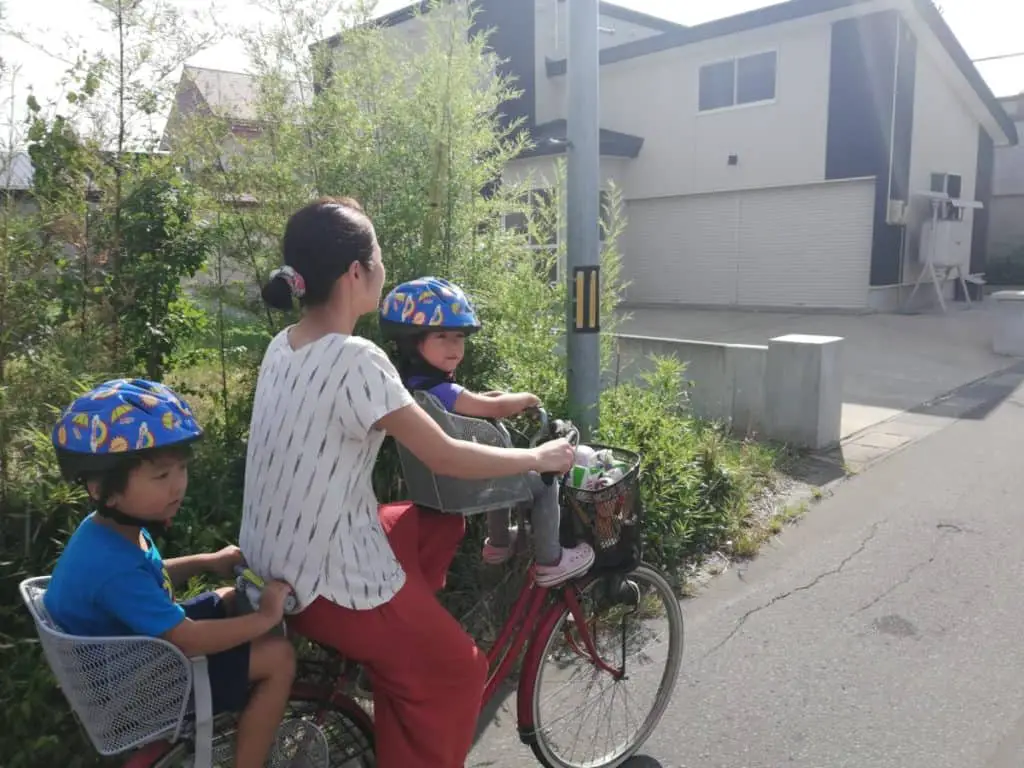
By following some basic safety tips and your own common sense, bike trailers can be much safer than alternative options, such as bike-mounted child seats.
On top of that, there is the added benefit of being very healthy for you and your child long-term, which helps reduce the risk factors involved with riding with a bike trailer.
There is an excellent article by Mr. Money Mustache that argues that bikes are the safest form of transport. I recommend reading it here.
What does the research say about bike trailer safety?
There is currently not enough research done on the safety of bike trailers, simply because there aren’t enough people using them to gather a relevant case study.
On top of that, we haven’t really given bike trailers a fair chance because our entire infrastructure is designed for cars first (especially here in the US). The evidence we do have is based on the safety of biking in general, which is a good indicator of how safe bike trailers are.
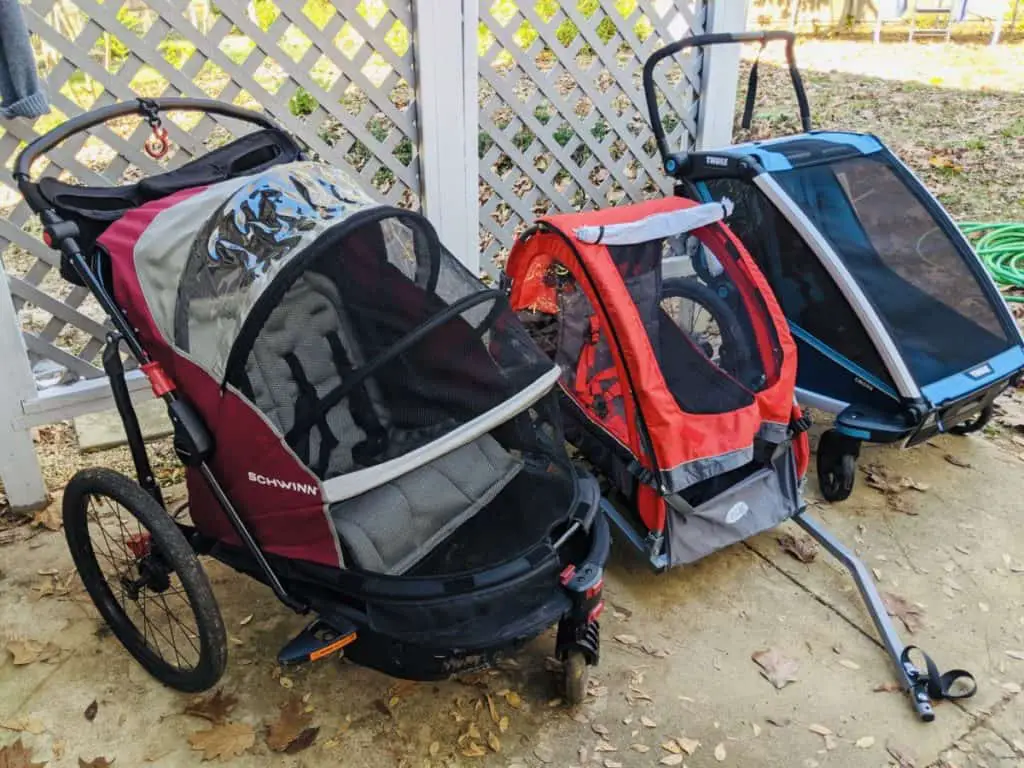
Perhaps the most helpful piece of data available is how fatal crashes usually occur, and then do everything we can to avoid those situations.
According to the National Highway Traffic Safety Administration in the United States, they state the following:
“There are two main types of crashes: the most common (falls), and the most serious (the ones with cars). Regardless of the reason for the crash, prevention is the name of the game. There are things you can do to decrease your risk of a crash. First, know some bicycle safety facts:
1. Regardless of the season, bicyclist deaths occurred most often between 6 p.m. and 9 p.m.
2. Bicyclist deaths occur most often in urban areas (75%) compared to rural areas (25%) in 2017.
3. Bicyclist deaths were 8 times higher for males than females in 2017.
4. Alcohol was involved in 37% of all fatal bicyclist crashes in 2017.Ride responsibly, and remember: All states require bicyclists on the roadway to follow the same rules and responsibilities as motorists.”
Comparing bike trailers to alternatives
When considering how safe something is, it is most helpful to compare it to other alternatives, or the opportunity cost.
In the case of bike trailers, the obvious comparison is with the popular bike-mounted child seat. I would like to go a little deeper and make a comparison to other outdoor activities that have similar risk factors, such as riding a bike in general, skiing, or driving with a child.
On top of all that, the most dangerous comparison is inactivity.
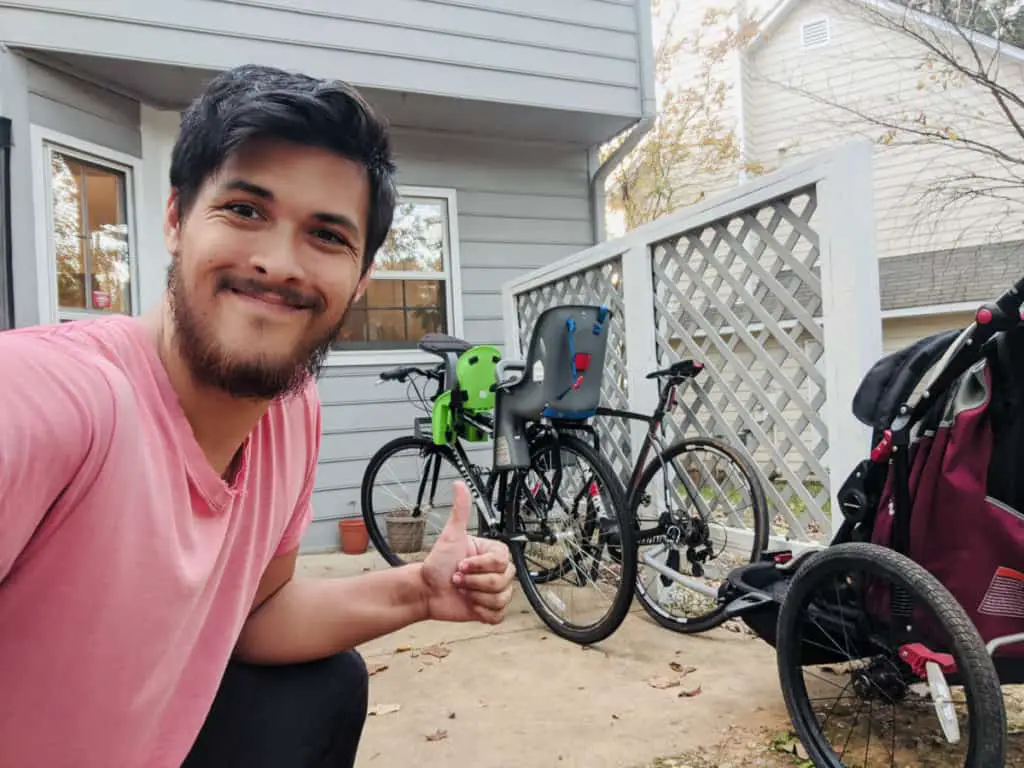
Are bike trailers safer than child seats?
At first glance, it would seem that the bike-mounted child seat is the easiest and safest way to ride with a child due to the fact that they are kept close to you and bike trailers seem cumbersome to pull behind your bike. However, bike trailers are far safer than child seats in the event of a crash.
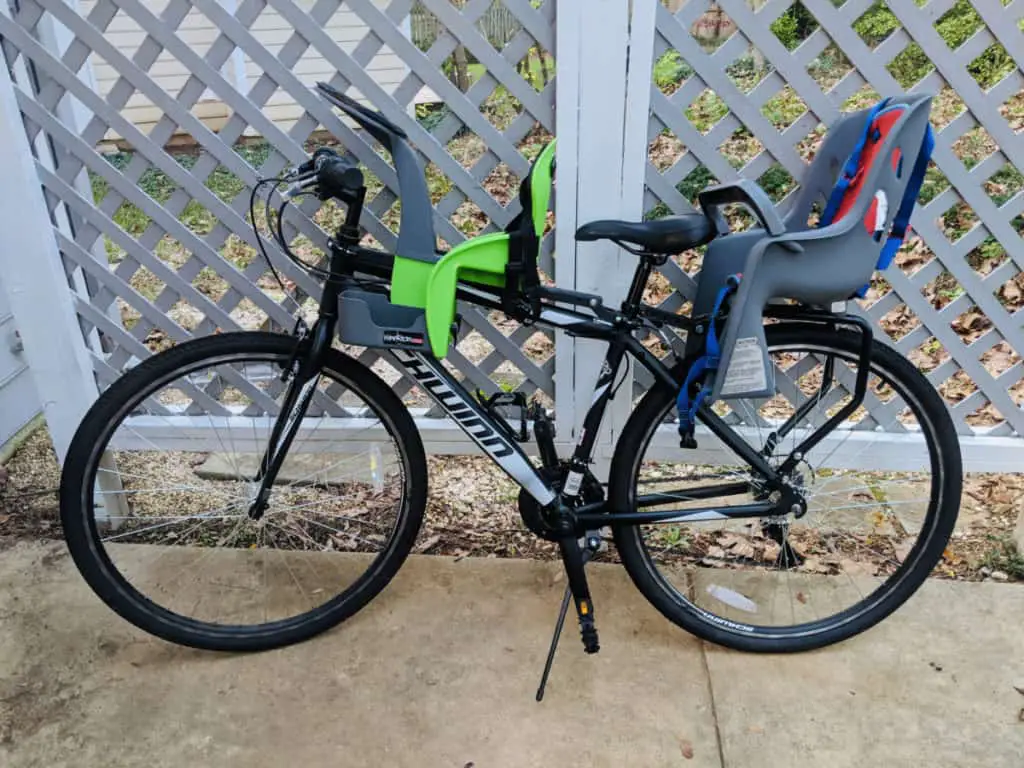
In the event that your bike crashes or falls over, the crash will have a much lower impact (if any) on the child who is enclosed inside the protective bike trailer. Bike trailers either come with a cage-like protection or a canopy cover that separates them from any harm. I should mention that I have never crashed with the bike trailer or with a child seat, so it shouldn’t be too much of a concern for you if you follow basic safety precautions.
With child seats, on the other hand, if you crash or fall over, your child will almost definitely get hurt. I have personally been in situations where one of my kids was sitting in the child seat and then it toppled over while I was trying to get on. As always, they wear helmets and were fine.
Bike Trailers vs. Other Activities
The reason it’s important to make a comparison with other activities is because generally bike trailers receive an unfair amount of skepticism regarding their safety, where in fact, there are many common outdoor activities that pose similar risk factors.
Riding a bike in general, skiing, and driving are all very common activities that have elements of risk involved. Why are they not considered “dangerous”? Because they are enjoyable, efficient, or healthy and therefore any associated risks are not concerning. The same can be said about bike trailers. They are extremely healthy, efficient, and enjoyable, so the slight risk involved in an unlikely crash can be heavily outweighed by the benefits.
Bike Trailers vs. Inactivity
The most destructive and dangerous activity in modern human history is inactivity itself.
From that perspective, the health benefits and exercise that bike trailers offer heavily outweigh the risk of not doing anything at all. Of course, you can choose to do any sort of activity to counter the health risks of inactivity. But, bike trailers offer a unique set of health benefits that you and your child get to experience together.
On top of that, you are leading by example and showing your child how to live an active and healthy lifestyle.
3 reasons bike trailers are perceived as dangerous
There are 3 main reasons bike trailers sometimes receive such an unfair assessment.
1. We’re not familiar with bike trailers
Especially here in the United States, the norm is car transportation, regardless of how short the trip is. In other countries, such as Denmark, Japan, and some parts of America, it is very common to see people riding together with children.
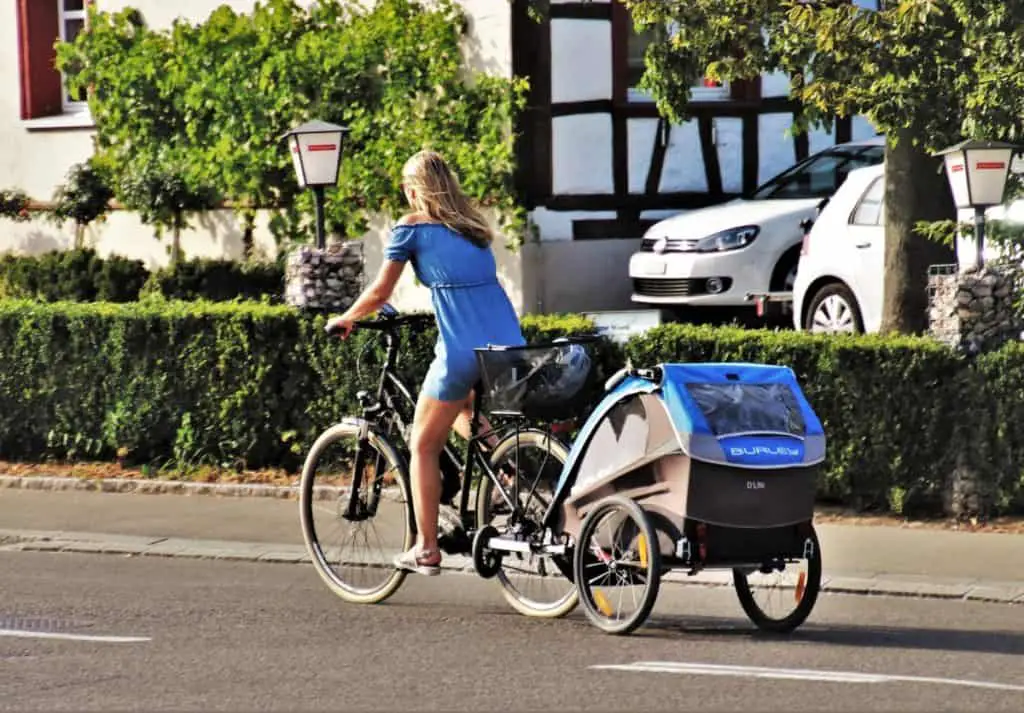
2. We’re afraid of car incidents
This is probably the most valid concern with bike trailers. If you are riding near cars, there is always the risk of cars not seeing the bike trailer. However, you can help eliminate the risks by following a few basic safety precautions (outlined below) and avoiding riding around cars as much as possible.
3. We’re lazy
Often times the easiest way to dismiss something challenging but good for us is to say it’s dangerous or wouldn’t work. I think this sometimes happens unconsciously with parents who are toying with the idea of getting a bike trailer, but the safety factor becomes an excuse to not take the plunge. It’s the same excuse we make when considering biking to work.
Five tips to make bike trailers even safer
With all that said, there are several things you can do to make riding with a bike trailer even safer. Here are five things you can do to reduce any risks.
1. Assume you are invisible to drivers
By far the most important thing you can do to stay safe while cycling, especially with a bike trailer, is to assume that you are invisible to drivers. The unfortunate reality is that drivers are not looking for bikes on the road. This is not necessarily intentional, but rather an effect of tunnel vision. In other words, when people are driving, they are looking for other cars because cars pose the greatest threat to them. Therefore, they are just not actively looking for bikes.
This is why it’s important to just assume that drivers cannot see you. Even if you’re using flashing lights and high-visibility clothing, it is very dangerous to assume that people can see you.
I know, this is an unfortunate situation we find our selves in because we don’t want to be invisible. But if you want to stay safe, then just pretending that you’re invisible will cover almost all of your bases for staying safe.
Here’s a helpful video by Yours Truly about how to stay safe while riding!
2. Travel at low speeds under 10 mph (16 kph)
Regardless of the age of your child, it is always recommended to keep speeds under 10 mph (or 16 kph) to reduce the risk of losing control.
(Good luck going any faster than that anyway 🙂).
Kidding aside, riding at slower speeds will give you more control over steering the trailer and also braking when needed. In addition, riding too fast may cause your child to feel uncomfortable with the bobbing up and down, especially on rough terrain.
3. Avoid riding near cars
Since cars pose the greatest threat to any cyclist or pedestrian, it is recommended to avoid riding near cars whenever possible.
You can minimize your proximity to cars by riding on sidewalks, bike paths, and taking local backroads. Do not ride on the road shoulder with a bike trailer, as the bike trailer is much wider than your bike, which could lead to the bike sticking out into the road or hitting the curb.
4. Find local backroads with less traffic
The reason we often get scared of taking a particular route to our destination by bike is that we are used to driving that same route, and we don’t realize that there are usually back roads and small local roads that take us to the same destination without the traffic.
You should always use your phone’s map app (Google Maps, Apple Maps, etc.) to map out your ride before heading out the door. Google Maps will even recommend the best and safest bike route if you click on the “biking” icon.
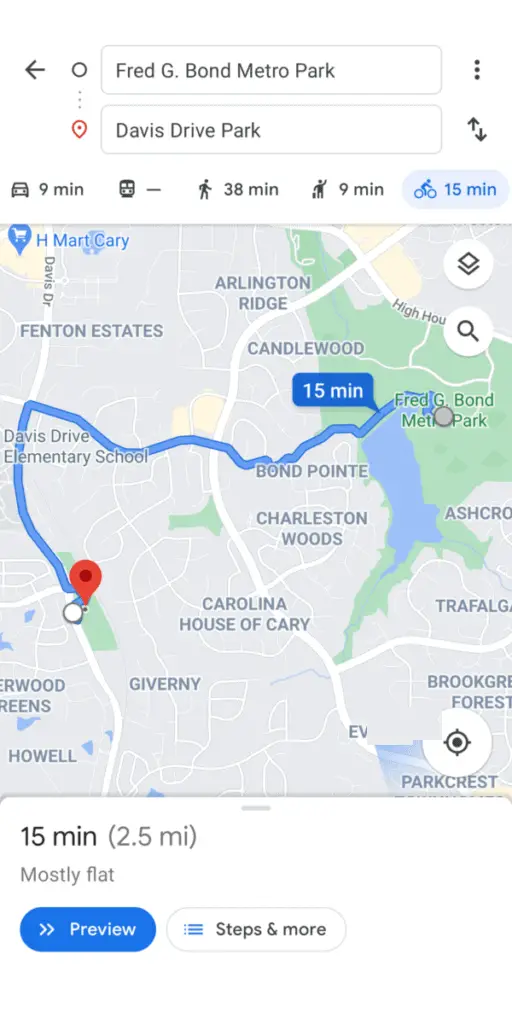
5. Use flashing lights and a flag
One of the potential dangers of biking, in general, is cars and other riders not seeing you. This is even more important when riding with a child because bike trailers are closer to the ground and a driver might not see it.
It is always good practice to ride with flashing lights on your bike, as well as on the bike trailer (even during the day). The other recommendation to ensure visibility is to mount a flag to the trailer that will put the trailer in the eye line of drivers. Many bike trailers come with flags to help with visibility.
Should a child wear a helmet inside a bike trailer?
The industry-wide recommendation is that children aged 1 and up should always wear a helmet while riding in a bike trailer, regardless of local laws. However, it is not recommended that infants under 1 year of age wear a helmet because it adds additional weight to the neck and places the head in an uncomfortable position.
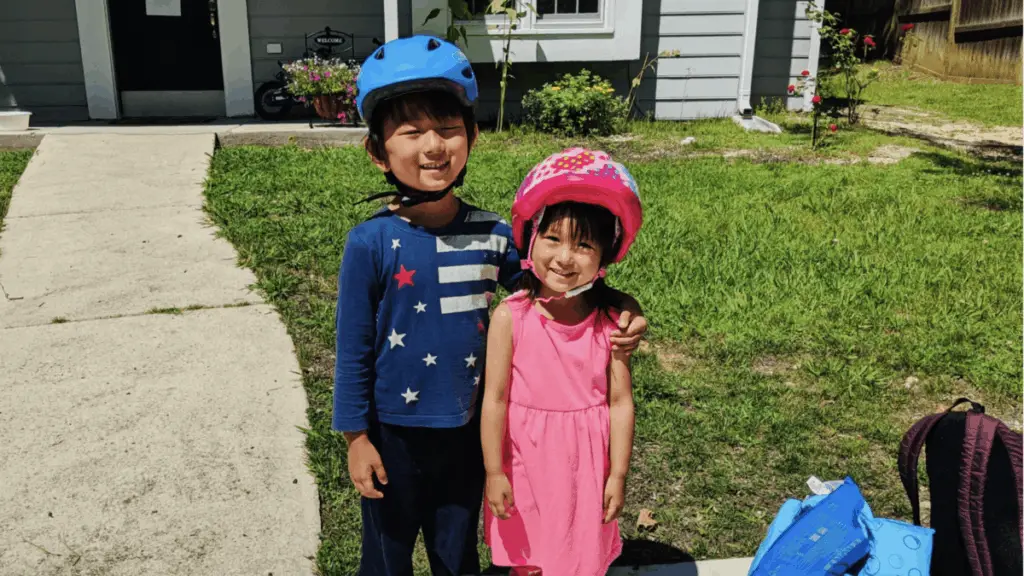
According to Burley, which is one of the leading bike trailer manufacturers based in the United States, they state:
“If the trailer is being used in Bike Mode, YES, the child should always wear a helmet. A helmet will protect him or her and also help develop the habit of always riding with a bike helmet.”
Here’s a helpful pre-ride checklist by Burley to make sure you have a safe and smooth ride.
The topic of helmets on children is actually hotly debated. If you want to hear my take on the matter, I wrote an entire article on Helmets vs. No Helmets.
My opinion is that children, especially toddlers, should be guided and educated to take safety precautions through the use of wearing a helmet.
Conclusion on Safety
If you stumbled upon this article because you have safety concerns about bike trailers, then I hope I was able to adequately represent the clear benefits of bike trailers. Instead of focusing on the risk factors, I would instead recommend focusing on the enjoyment and health benefits.
Similar to many other semi-high speed recreational activities, bike trailers offer an element of risk that can be minimized by utilizing the basic safety tips mentioned in this article. Over time, you absolutely will become more and more confident while pulling the bike trailer, and your health will thank you for it.
If you need help finding the right bike trailer for you, check out the Ultimate Guide to Buying a Bike Trailer. I also have compiled a list of the top current bike trailers for every common situation, which you can check out here.
Ride on!

